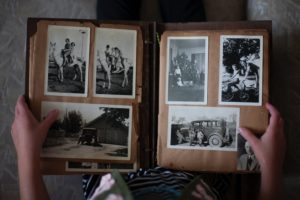When I think back on Boldface Conferences I’ve attended in the past—which is a whopping total of two, but hear me out—they’re shaped and structured in my mind by three main experiential keystones:
- The 8:00 in the morning feeling of that initial walk-in to the main pavilion
- The workshops
- The after-party at Calhoun’s Rooftop
Now, that is not to say none of the other Boldface events are important to me—I can hear still clearly the ringing of words from my favorite readings, and I still carry around lessons learned in masterclasses, both figuratively and literally, as I do have handouts and notes from the talks in various folders and journals—but the above three experiences are mainly what shape Boldface in my mind. The way they all relate to each other carries me through the journey that is the week of Boldface. They represent the arc of the experience, both physically and emotionally, because your relationship with Boldface changes over the week. It really does. And it’s a wonderful feeling—a crest, a rolling, billowing crescendo of experience that is made up of friends, mentors, connections, literature, self-reflection, and a crap-ton of (free) coffee. Probably too much, every single morning.
The first thing I remember is climbing that winding staircase in the MD Anderson Library to see the front desk with bright, welcoming faces handing me my folder and name-tag. I remember walking past a table filled with breakfast foods—cucumber water, fruit, and breakfast tacos on the first day—manned by similarly smiling faces. And I remember the coffee station, situated right before the main pavilion, the slow but strong trickle of attendees making their way, paper plates and cups in hand. I helped myself right away to the food and coffee, then walked in to a large room filled with round tables and chairs, where you could feel in the air encouragement to meet your fellow writers. There weren’t many places to sit by yourself which caused me some anxiety in the moment but looking back, I am grateful for it. I am grateful for everything about that room, those first moments. There was that energy, that encouragement, but it was soft and welcoming. Nobody pressed you for anything, there were no crowds pushing you toward or away from anything, and everyone seemed kind. Like they wanted to greet and meet you, but only when you were ready. The people I met and interacted with on that first day went on to become life-long friends, but in the moment what they were most to me was kind.
The workshops were similar in energy, but that wasn’t the focus. That wasn’t what I remember. What I remember was our leaders—the grad students that ran them. They each cultivated their own unique atmosphere, with help from their workshop students. Rachel Ballenger, who ran my workshop my first year, was graceful but down-to-earth, and always approached things intelligently and with sensitivity. With her guidance, our fiction workshop was careful and deliberate, heartfelt and passionate, and always smart. My second year’s workshop was run by Will Burns, who was similarly down-to-earth and intelligent, but with a bit more of an imaginative edge. He did a craft-talk that year about lovable obsessiveness and how to create vibrant characters, and I think the way he ran our workshop was influenced by that aspect of his personality. He brought vibrancy to all our stories, and in turn our workshops felt more generative, and our critiques seemed to lean more toward making our stories more open and colorful. Some of the most inventive and artistic stories I’ve ever read by emerging writers were produced through that workshop. But by the end of each workshop, more important than the critique of whatever story I was working on at the time, I had learned something about these people. I had connected with them all as individuals, and we had developed a connection between all of us as a group that I think informs my writing more than any workshop letter or piece of advice could.
Finally, after the week was over, and the blur of scribbling in notebooks and visiting a variety of booths at the book-fair and eating plenty of wonderful food had stilled, I remember getting to relax and have a drink at UH’s very own Calhoun’s Rooftop. Although it isn’t a closed event, it is the summer, and Boldface is a pretty big crew, so when you get up there it’ll be a crowd of only familiar faces. Which, if you’re like me (i.e. a bit misanthropic), will be something you are altogether unfamiliar with. I’m used to finding familiar faces in crowds of unfamiliar faces, not finding myself exclusively among people I’ve gotten to know over five consecutive days, only a few of which I can very securely call friends. I was able to walk amongst these people and have the potential to talk with each about a topic unique to us. The guy over to my right I could talk to about the reading that I sat next to him during. The group to my left is my workshop group, hanging out with our leader. Over there in the back is the girl I stood in line for lunch with, talking about our favorite video games. And right under the umbrella is the girl I sat next to that very first day, who I could tell even then was going to be my best friend. That is a unique gift, and one of the reasons why this third experience makes the top three list. Because this experience is something that encapsulates the entire week—it represents the culmination of the relationships that you make over the week, the ideas shared amongst everyone involved, and, of course, what you all have in common: not just a love of writing, but of connection.
